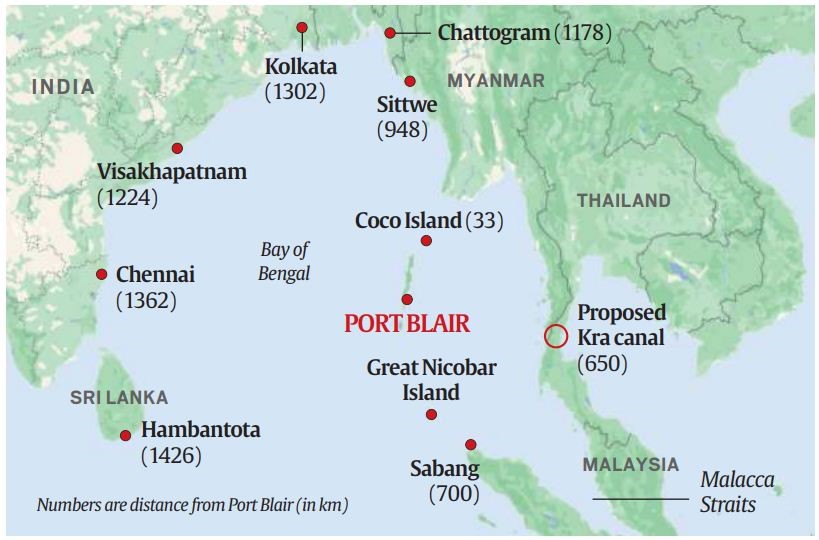The new thrust on developing strategic infrastructure, both civilian and military, on the Andaman and Nicobar Islands has been long awaited.
|
Andaman and Nicobar Islands |
|
|
Strategic location |
Significance |
|
Sabang in Indonesia |
It is 90 nautical miles southeast of Indira Point (on Great Nicobar island) |
|
Coco Island in Myanmar |
It is barely 18 nautical miles from the northernmost tip of the Andamans. |
|
Kra canal to be built by Thailand |
The canal would connect the Gulf of Thailand with the Andaman Sea, its mouth would be about 350 nautical miles east of Port Blair. |
|
Malacca strait |
It connects the Indian Ocean to the Pacific, is less than a day’s steaming from Port Blair. |
Andaman and Nicobar Command (ANC), established as a tri-services command in 2001, plays a crucial role in safeguarding India's maritime interests.
